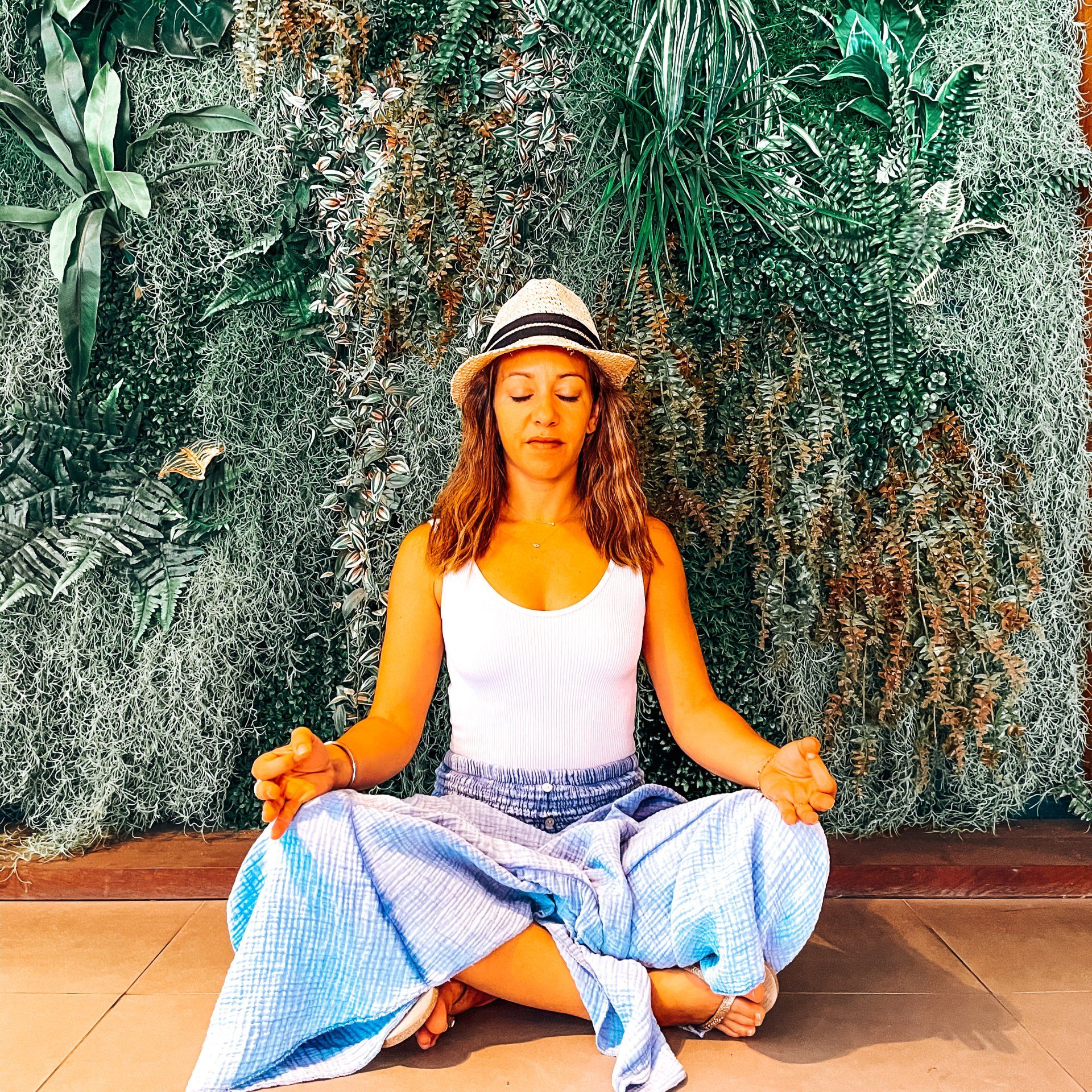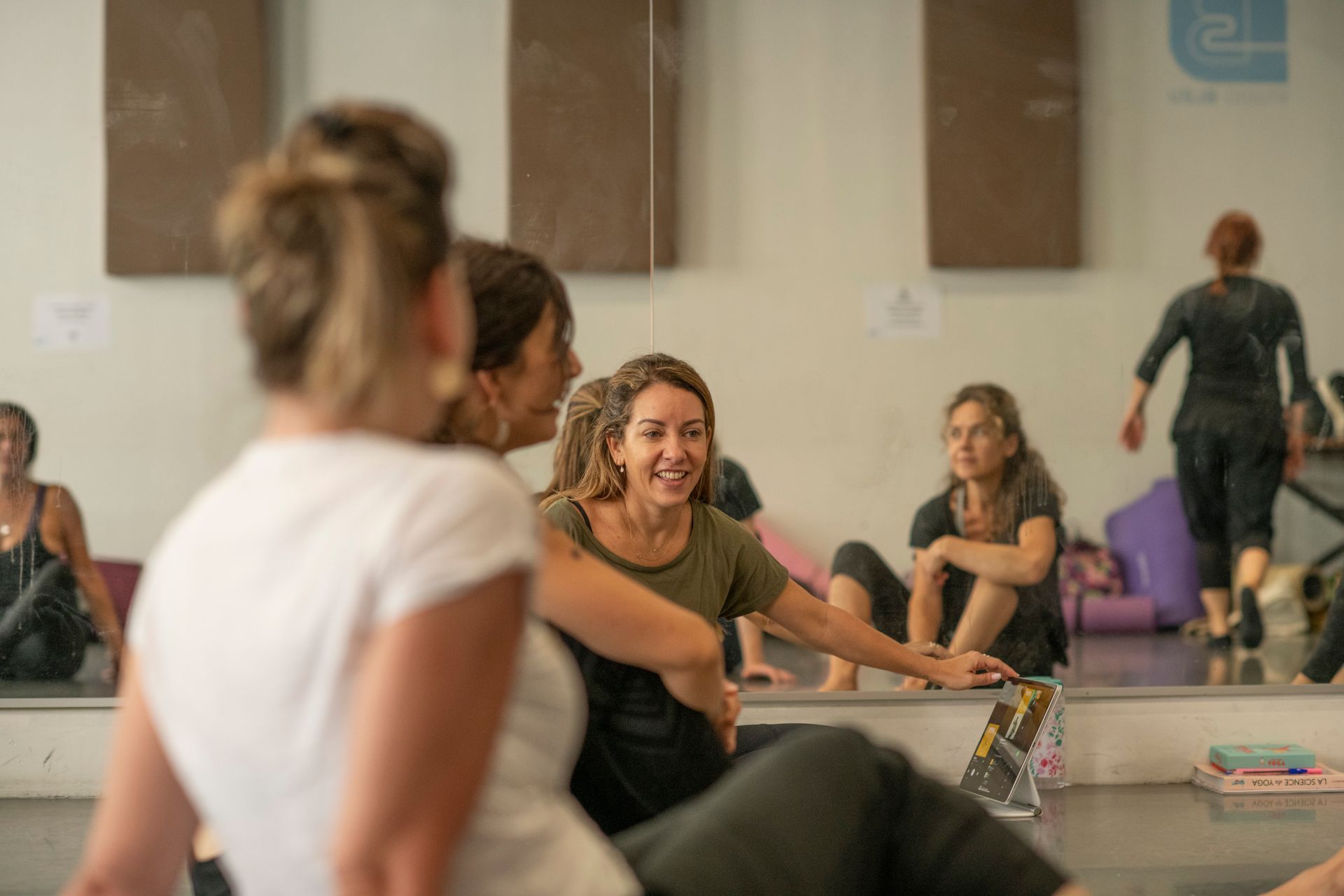🍃 Breathing is Practicing
🍃 Breathing is Practicing ✨
🕉 What is Pranayama?
The Sanskrit word Pranayama is composed of:
- Prana – the vital life force, the breath of life, what flows in and around us.
- Ayama – to extend, to expand, to direct.
👉 So Pranayama isn’t just about “breathing deeply.”
It’s the art of observing, extending, and refining the breath to shift our inner state.
It’s not about controlling — but rather about
inhabiting the breath with awareness and respect.
🌬 Why is breath so central in yoga?
The breath is the
bridge between the conscious and unconscious functions of the body.
We don’t have to think to breathe — but we can decide to change how we breathe. That’s what makes it such a powerful tool.
Here’s what breath impacts:
- 🧠 Autonomic nervous system:
- Slow, steady breathing activates the parasympathetic system (calm, regeneration).
- Fast or shallow breathing stimulates the sympathetic system (alertness, action).
- 💓 Heart rate & cardiac coherence
- 🧘♀️ Mental & emotional state: clarity, focus, calm
- 🌀 Energy flow (prana) through the nadis (subtle energy channels)
To breathe is to
return to presence, create inner space, and regulate your internal landscape.
It’s a tool for grounding, cleansing, and awakening.
✨ The Benefits of Pranayama
Both ancient yogic wisdom and modern science agree:
Pranayama works deeply on the body, mind, and energy.
🧠 Mental & emotional benefits:
- Reduces stress and anxiety
- Enhances concentration and memory
- Increases emotional stability and self-regulation
- Prepares the mind for meditation
💪 Physical benefits:
- Improves lung capacity
- Enhances oxygenation of the tissues
- Regulates heart rate and blood pressure
- Strengthens the diaphragm
🔮 Energetic & spiritual benefits:
- Purifies the nadis (energy channels)
- Balances solar and lunar energies
- Cultivates inner awareness
- Deepens access to meditative states
🌱 Key Pranayama Techniques
Here are 4 essential breathing practices to explore:
1. Abdominal (belly) breathing – grounding & calming
Perfect for beginners. This breath roots you in your body, slows the heart rate, and soothes the mind.
When to use it: At the beginning of a class, during relaxation, or in stressful moments.
2. Nadi Shodhana – alternate nostril breathing
Purifies the energy channels (nadis), centers the mind, and balances the system.
Benefits: Calms the mind, improves focus, balances left/right brain activity.
When to use it: Before meditation, or anytime you need clarity and balance.
3. Kapalabhati – breath of fire / purification
A dynamic breath with abdominal pumping. Energizing and clearing.
Benefits: Boosts energy, stimulates digestion, sharpens the mind.
When to use it:
In the morning or before dynamic practices (⚠️ avoid if pregnant, hypertensive, or with heart conditions).
4. Cardiac coherence – rhythmic breathing (5-5-5)
Inhale 5 sec – exhale 5 sec – repeat for 5 minutes. A go-to for emotional balance.
Benefits: Soothes the nervous system, reduces stress, improves sleep.
When to use it: At the end of a session, before sleep, or during emotional tension.
🧘♀️
How to integrate Pranayama into your practice (and teaching)
🌟 In your personal practice:
- Start with 5 minutes of mindful breathing each morning.
- Adapt your technique to your current state (tired, tense, scattered, needing energy).
- Observe. Feel. Adjust. The breath is a living being.
🌟 In your classes:
- Begin with a short guided breath to center your students.
- Offer simple techniques with clear explanations and time to feel.
- Don’t jump into intense breathwork without preparation (e.g. Kapalabhati, Bhastrika).
- Always allow a moment of integration after any Pranayama.
🗝 Pro tip: Link breath to movement in your cues.
Ex: “Inhale, gently lengthen your spine. Exhale, soften your shoulders.”
💬 In Summary
- Pranayama is not a bonus — it’s the heart of yoga, the bridge between body, mind, and energy.
- It works deeply on our physiology, mental state, and emotions.
- A regular breath practice soothes, energizes, balances, and awakens.
- Integrating Pranayama into your practice or your classes opens the door to real transformation.
🔗 Want to go deeper?
At
YogaDanse.eu, we place breath at the center of every training —
not as a rigid technique, but as a
living art, subtle, embodied, and powerful.
🌬 In our teacher trainings, you’ll learn how to:
- Use breath as a tool for grounding, cueing, and energy regulation
- Design sessions that flow from breath
- Teach accessible yet transformative techniques to all types of students
📖 Explore our programs: www.yogadanse.eu
And you — what’s your favorite breathing technique?
💬 Share it in the comments or join the conversation with us on Instagram!
Namaste 🪷







